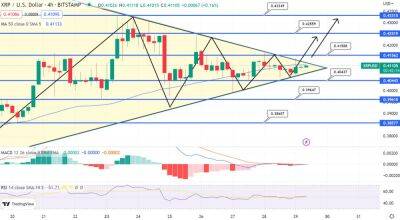Price analysis 1/18: BTC, ETH, BNB, XRP, ADA, DOGE, MATIC, DOT, LTC, AVAX
The United States producer price index (PPI) fell 0.5% for the month, which was much more than the 0.1% decline estimated by economists surveyed by Dow Jones. The largest monthly decline since April 2020 was also aided by a sharp drop in energy prices.
Another report showed that the retail sales data dropped 1.1% in December, a tad bit more than the anticipated 1% decrease.
Although both data points show inflation is cooling off, the U.S. stock markets failed to hold on to their initial gains. Similarly, several cryptocurrencies sold off from their intraday highs, indicating that traders may have booked profits ahead of the Federal Reserve’s meeting on Feb. 1.
The strong crypto recovery in the past few days has seen traders return to the fore. Bitcoin’s (BTC) trading volume soared 114% over seven days. Strong volume accompanied by a sharp rise in prices usually indicates aggressive buying by the bulls. This increases the likelihood that Bitcoin’s November low at $15,476 may not be breached.
How far could Bitcoin and altcoins correct and what are the important support levels to keep an eye on? Let’s study the charts of the top-10 cryptocurrencies to find out.
Bitcoin rose above the overhead resistance of $21,480 on Jan. 17 and Jan. 18 but the bulls could not sustain the higher levels as seen from the long wick on the candlesticks. This shows that the bears are protecting the level.
The failure to sustain above the overhead resistance may attract profit-booking by short-term traders. That could start a short-term correction in the BTC/USDT pair. The first strong support is the 38.2% Fibonacci retracement level of $19,489.
If the price springs back from this level, it will suggest that shallow dips are attracting buyers. The
Read more on cointelegraph.com
















